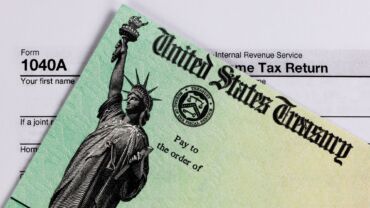Disparate, Scattered Tax Data and Manual Processes Waste Time and Create Risk for Multinational Corporations
At many large, global companies, the financial data needed for tax calculations are scattered across the organization and around the world. Corporate tax managers often spend valuable hours trying to ascertain where source data is located and manually gathering the information they need from these disparate sources.
Data may arrive via email in a variety of formats and stored in standalone Excel spreadsheets—requiring extensive manipulation so it will conform with tax department applications.
The lack of standardization, controls, and data security is inefficient, increases the risk of costly errors, and undermines critical tax management operations.
“Tax reporting can be a complete nightmare . . . when everything is so decentralized,” said Prachi Rathore, ONESOURCE DataFlow product manager at Thomson Reuters. She made the comment during a presentation on automated tax data management at the company’s recent virtual customer conference.
With a centralized repository and advanced data management software, however, tax teams can seamlessly connect business systems, automate data transfer, access data whenever and wherever it’s needed, reduce manual input and reformatting, and gain better control over the entire data management workstream.
A Piecemeal Approach
Rathore described several ways that a lack of data management automation hampers tax teams:
Data Collection: This preliminary administrative step has always been difficult in the absence of centralized data storage, standardized templates, and sound document management protocols. It’s even more challenging now that the COVID-19 pandemic has forced people from their offices to remote work settings, Rathore noted.
Data Consolidation: “When there isn’t a standard way of gathering all the data . . . it creates inconsistencies,” Rathore noted. “There is a lack of visibility . . . because everything is disparate and people are working in their own version of the Excel book that is being passed around.”
This creates myriad problems:
- It wastes time. Most corporate tax departments spend up to 80% of their work hours collecting and entering information—busy work that leaves little capacity left to deliver greater strategic value to the company.
- It creates inaccuracy. The more people manually handle and manipulate data, the more likely they will introduce errors.
- It lacks transparency. Managers cannot see how far each individual contributor has progressed in their work, making it difficult to plan and manage deadlines.
- It creates uncertainty. Working on documents stored in a shared drive without explicit access protocols leaves people in the dark and “uncertain who is working on what,” Rathore pointed out. As a result, they may overwrite others’ work and duplicate efforts.
Data Standardization: When individual data sources around the enterprise store information in different ways “someone else needs to put it all together in the same format, so it all makes sense,” Rathore said. This need to “massage” tax data is another opportunity to introduce inaccuracies and inefficiency.
The Solution: Data Management Automation
Tax data software such as the Excel-based ONESOURCE DataFlow application can streamline, automate, and standardize data collection and management throughout the corporate tax workstream.
DataFlow enables tax managers to convert an Excel tax package into a web-based form that is securely sent to data providers who, in turn, populate it with the relevant, standardized financial data. This information:
- Is securely stored in a centralized platform.
- Is protected through access controls that establish users’ roles and responsibilities.
- Can easily be reviewed in real-time, aggregated for reporting, and used in other tax management applications and processes including provisions and compliance.
The result, Rathore noted, is a streamlined, efficient, and harmonious tax data management operation.
Next-Generation Data Collection
Recent enhancements take DataFlow’s performance to the next level—and showcase Thomson Reuters commitment to continually improve its products and customer experience. These include:
- Optimized data storage and document management.
- Integration with a central entity manager, jurisdiction, and tax type.
- Server-side processing of information retrieval, which improves DataFlow performance 10% to 15% (depending on the size of the template, the type of network, and other considerations.)
- Optimized table and range structures.
- Improved API access to information stored in DataFlow, so it to be used in other applications to create always-up-to-date custom dashboards and reports.
- Centralized platform services with a common administration function that enables users to work seamlessly across ONESOURCE applications.
- Globalized and cloud-based infrastructure.
- Being browser agnostic.
- Expanded language support.
- Modern look and feel and improved ease of use.
Thomson Reuters robust technology roadmap for DataFlow anticipates further upgrades in the first half of 2021—including integration with DataHub and Client Manager and enhanced transition tools, security, and reporting. “We’re making so many changes,” Rathore said, “and optimizing DataFlow further based on feedback we’re receiving from our beta customers and testers.”
The result is a streamlined workflow that saves time throughout the entire data management process, improves data performance, and reduces the risk of manual error with complete data governance through automated, no-touch processes.
Learn more about our powerful tax data management software that saves you time at every step.
For more articles to help you transform your tax department, read our latest blog posts:
4 Factors To Help You Optimize Your Tax and Finance Teams
Tracking Global Tax Filing Deadlines on A Spreadsheet Doesn’t Work
Do More with More? Dissecting the Fast Pace of Digital Transformation and Its Tax Implications
Will the final GILTI calculations give your company a tax refund?
Data management software for corporate tax businesses








